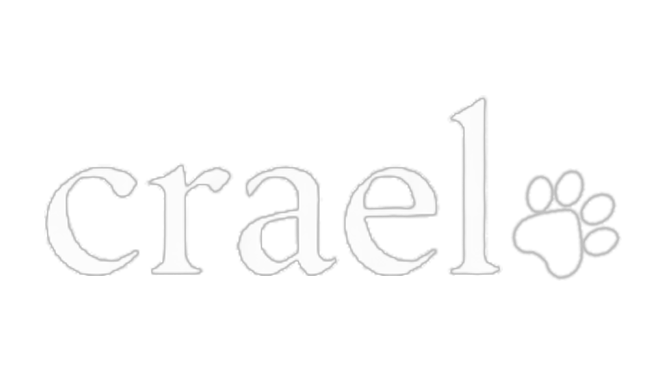Como escolher a melhor ração para cães idosos em casa
I share how I check my senior dog’s nutrition at home using simple, gentle checks. I watch clear signs your dog needs more mental stimulation and what to do to spot gaps and focus on a few big wins: protein, fiber, omega-3s, and glucosamine for joints. I track weight, read labels, choose grain-free or high-protein when needed, and rely on reviews and my vet. Below is a short checklist and safe steps I use to try new food — all aimed at answering “Como escolher a melhor ração para cães idosos em casa.”
Key takeaway
- Choose food with real meat as the main ingredient.
- Prefer gentle proteins that are easy on the stomach.
- Look for glucosamine and omega-3s for joint support.
- Avoid artificial colors, flavors, and cheap fillers.
- Switch slowly and monitor appetite, stool, energy, and weight.
How I check senior dog nutrition at home (Como escolher a melhor ração para cães idosos em casa)
I use my eyes, hands, and short label checks. I look for clear signs, key nutrients, and a practical label checklist and feeding setup to decide what fits my dog’s needs at home.
Signs I watch to spot nutritional gaps
- Weight loss or gain — weigh every few weeks; sudden change is a red flag.
- Low energy — more napping, less play. (If activity drops, see ideas to keep indoor dogs active on a busy schedule.)
- Coat changes — dull or thinning coat points to low fat or omega-3s.
- Stiffness or joint pain — limping or trouble standing may indicate low joint support.
- Loose stools or constipation — can mean wrong fiber or fat balance; home-cooked options and fiber sources are covered in allergy- and diet-focused guides like allergy-friendly meals for dogs.
- Frequent thirst or urination — could be metabolic; check with the vet.
- Bad breath or dental issues — may require texture change or dental care.
Small clues add up. When my dog slowed after a walk, a simple weigh-in and a food swap helped — that’s why regular checks matter.
Key nutrients I prioritize
I focus on nutrients that make the biggest daily difference.
| Nutrient | Why I care | Signs of low levels | Food examples |
|---|---|---|---|
| Protein | Maintains muscle and strength | Weight loss, weakness | Chicken, fish, beef, quality kibble |
| Fiber | Aids digestion and stool form | Diarrhea, constipation | Pumpkin, beet pulp, whole grains |
| Omega-3s | Supports joints, coat, brain | Dull coat, stiffness | Fish oil, salmon, flax |
| Moderate fat | Energy and skin health | Low energy, dry skin | Animal fats, fish oil |
| Controlled calories | Prevents obesity | Weight gain, slow movement | Foods labeled for senior dogs |
| Calcium & phosphorus | Bone health | Weak bones, mobility issues | Balanced commercial diets |
I pick foods that list a real meat first and show an AAFCO statement for seniors or adult maintenance. If my dog is less active, I watch calories closely — and use activity and enrichment tips from guides like environmental enrichment for dogs to keep movement up.
Quick label checklist I follow
- First ingredient is a named meat (chicken, beef, salmon).
- Note protein %, fat %, and fiber % on the guaranteed analysis.
- Look for the AAFCO statement: complete and balanced or specific senior formulation.
- Check calories (kcal) per cup to match activity.
- Avoid vague terms like meat meal without a named source.
- Look for EPA/DHA or fish oil listed.
- Avoid excess fillers (too much corn or soy).
- For kidney issues: lower phosphorus and controlled protein.
- Taste test: appetite matters.
| Step | What I check | Red flag |
|---|---|---|
| 1 | First ingredient | “By-product” or unnamed meat |
| 2 | AAFCO line | Missing or unclear |
| 3 | Guaranteed analysis | No protein/fat/fiber numbers |
| 4 | Calorie count | Too high for a slow dog |
| 5 | Special claims | No real omega-3 listed |
Read labels like a map and compare bags side by side. If you feed multiple pets or manage portions for a slow senior, a thoughtful feeding setup makes this easier — see tips on designing an indoor feeding station.
How I choose low-calorie senior food for weight control (keyword: Como escolher a melhor ração para cães idosos em casa)
My goal: help an older dog lose weight safely. I pick formulas with lower calories, more protein, and higher fiber to keep him full. Avoid high fat and too many fillers. Check the bag for calories (kcal) and joint-friendly ingredients like glucosamine if needed.
Simple checklist:
- Calories per cup listed.
- Named protein as top ingredient.
- Fiber higher than standard adult food.
- Clear feeding guide for weight loss.
I keep the phrase “Como escolher a melhor ração para cães idosos em casa” as a reminder to act at home: measure, monitor, and choose sensibly. To help a less-active senior burn calories, combine dietary changes with mental and physical activity ideas from interactive toys to fight obesity and a daily routine for indoor pets.
Tracking weight and body condition at home
Weigh weekly with the same scale and time of day. Record the number. Use a body condition score (1–9) to guide changes.
| Score (1–9) | How they look/feel | What I do |
|---|---|---|
| 1–3 | Very thin, ribs show | Vet check |
| 4–5 | Ideal, ribs easy to feel | Maintain |
| 6–7 | Slightly overweight | Cut calories, more walks |
| 8–9 | Obese | Vet plan, stricter feeding |
Run your hand down the ribs — if you can’t feel them easily, adjust. Take monthly photos to track changes.
Portion and calorie tips I use
- Use a kitchen scale, not a scoop. Scales are accurate.
- Read bag for kcal per cup, set a daily target based on weight.
- Measure by grams each meal.
- Cut or count treats; swap high-calorie snacks for veggies (carrots, green beans).
- Choose light or senior formulas with lower kcal if needed.
Example (illustrative):
| Current weight | Target weight | Example kcal/day |
|---|---|---|
| 35 lb | 30 lb | 700 kcal |
| 50 lb | 42 lb | 950 kcal |
Short daily plan:
- Morning: measured dry food (half daily kcal)
- Evening: measured dry food (half daily kcal)
- Treats: 1–2 small veggie treats or ~30 kcal
- Weekly: weigh on scale
If progress stalls 4–6 weeks, reduce food 5–10% and consult the vet. For portion control and making mealtime useful, see ideas on using mealtime as training opportunities.
Joint health: glucosamine and omega-3s
I watch steps and stiffness closely. I value glucosamine for joint comfort and omega-3s (EPA/DHA) for inflammation support. Together they often ease movement.
When to add or change:
- Signs: limping, stiffness, trouble rising, slowed walks.
- Talk to the vet before adding supplements.
- If vet agrees, choose a senior formula with glucosamine and higher omega-3 content.
- Start slow and watch for stomach upset or improved mobility.
| Feature | Why I check it | What I look for |
|---|---|---|
| Glucosamine | Joint comfort and mobility | mg per serving or ingredient list |
| Omega-3 (EPA/DHA) | Lowers inflammation | Fish oil, salmon, EPA/DHA amounts |
| Protein quality | Keeps supporting muscles | Named sources: chicken, salmon, beef |
| Calories | Prevents weight gain | Moderate calories for less active seniors |
| Added helpers | Extra joint support | Chondroitin, MSM with amounts listed |
Avoid vague claims and mystery ingredients. Compare labels like recipes, and pair nutritional changes with safe activity and enrichment strategies from resources like environmental enrichment for dogs alone to support mobility.
Grain-free vs high-protein: how I decide
Two paths:
- Choose grain-free if the dog shows allergy signs or the vet advises it. (For home-cooked or allergy-aware options, see allergy-friendly meals for dogs.)
- Choose higher protein if the dog is losing muscle or remains active.
I use the keyword “Como escolher a melhor ração para cães idosos em casa” to remind me that decisions should be practical at home.
When to try grain-free:
- Persistent itching, repeated ear infections, or chronic diarrhea linked to food by the vet.
- Trial under veterinary guidance (6–8 weeks) and monitor symptoms.
When to increase protein:
- Muscle loss, weak hips, slow recovery. Aim for clear named meat first and roughly 20–30% protein depending on vet advice.
| Protein range | Why |
|---|---|
| 18–20% | Good for less active seniors |
| 20–25% | Go-to for most older dogs |
| 25% | For muscle loss or very active seniors (with vet OK) |
Ingredient quick-check:
- Named meats first (chicken, salmon, lamb)
- Healthy fat (chicken fat, fish oil)
- Fiber sources (pumpkin, beet pulp)
- Short, clear ingredient list; avoid long chemical names
For very large senior dogs, caloric needs and joint care often have special considerations — see guidance for large-breed dogs when relevant.
Using reviews and testing new food safely
I read reviews like labels. I value owner reports about joint pain relief, weight control, stool quality, and appetite. I trust patterns over single glowing reviews.
What I check in reviews:
- Consistent owner reports of similar benefits
- Ingredient list and AAFCO statement present
- Vet recommendations or clinical support
- Recall history (few or none)
Testing a new food:
- Talk to your vet and share meds/labs.
- Buy a small bag or sample.
- Transition over 7–10 days:
- Days 1–3: 25% new / 75% old
- Days 4–6: 50% / 50%
- Days 7–9: 75% / 25%
- Day 10: 100% new
- Log appetite, stool, energy, weight, itch, or vomiting.
- Stop and call the vet if stool worsens >48 hours or appetite drops.
Quick brand comparison checklist:
- Protein source — named meat first
- Calories — appropriate for senior dog
- Joint ingredients — glucosamine, chondroitin, omega-3s
- Digestive support — prebiotics/fiber
- Allergen flags — anything your dog reacts to
- Veterinary support — vet-approved?
- Recall history — recent recalls?
- Price vs trial cost — can you afford a trial?
- Owner trends — consistent positive reports
If you manage multiple pets or need a tidy trial area, plan the feeding setup in advance — tips on designing an indoor feeding station help keep trials clean and controlled.
Feeding routine and working with the vet
Feed at the same times daily — routine helps digestion and appetite. I discuss portions, calorie targets, and medical needs with my vet. Together we choose a food that matches age, activity, and health.
What I share with my vet:
- Weekly weight logs
- Daily appetite and water intake notes
- Stool observations (photos if needed)
- Meds and supplements with doses and times
- Short notes on behavior, walks, and sleep
If weight drops >5% in a month, I call the vet. Building a stable routine is easier with a plan — see how to build a daily routine for your indoor pet and how to transition pets to a new daily schedule when changes are needed.
Adjustments for dental, kidney, or other age issues
- Dental pain: wet food or soaked kibble; test chewing.
- Kidney disease: lower protein and phosphorus as vet recommends; monitor appetite and labs.
- Weight loss: higher calorie, palatable mixes; weigh after 2 weeks.
- Weight gain: controlled portions, higher fiber; recheck weekly.
- Sensitive stomach: limited-ingredient or novel protein; monitor stools 3–7 days.
Take notes before vet visits: date, current weight, last 48-hour feeding, appetite scale (0–5), vomiting/diarrhea start and frequency, meds, photos of packaging and labels, and brief behavior notes. For keeping your home manageable while testing new textures and meals, see tips on maintaining a clean home with pets.
Conclusion
Simple, steady checks win. Watch for small signs — weight shifts, low energy, coat dullness, stool changes, stiffness — because they tell the story. Focus on the essentials: protein, fiber, omega-3s, and joint support like glucosamine. Real meat first, clear labels, and an AAFCO statement are your compass.
Weigh weekly, check body condition by feel, measure portions with a kitchen scale, count treats, and transition slowly over 7–10 days. Use grain-free only with vet guidance for allergies and higher protein when muscle loss is a concern. Read reviews for patterns and keep a short log to share with the vet. Small, consistent steps at home — the heart of “Como escolher a melhor ração para cães idosos em casa” — create extra good days.
For more practical tips and stories, visit https://blogcraelo.com.
Frequently asked questions
Q: How do I read senior dog food labels?
- Check protein, fat, and fiber.
- First ingredient should be a named meat.
- Avoid fillers and mystery meals.
- Look for an AAFCO statement.
Q: What protein and fat levels should my senior dog have?
- Moderate protein tailored to activity and muscle needs.
- Healthy fats like fish oil for coat and joints.
- Reduce calories if the dog is slow.
Q: How do I choose food for joint or kidney issues?
- For joints: look for glucosamine and omega-3s.
- For kidneys: lower phosphorus and controlled protein if the vet advises.
- Always consult your vet before switching.
Q: How fast should I switch my dog to new senior food?
- Transition slowly over 7–10 days.
- Start small and watch stool and appetite. Stop and call the vet if problems persist.
Q: How do I choose the best senior dog food at home? Como escolher a melhor ração para cães idosos em casa
- Base choices on age, weight, health, and vet advice.
- Try trusted brands, read labels, and check ingredients.
- Use short trials, monitor results, and prioritize named meat, joint support, and digestibility.






